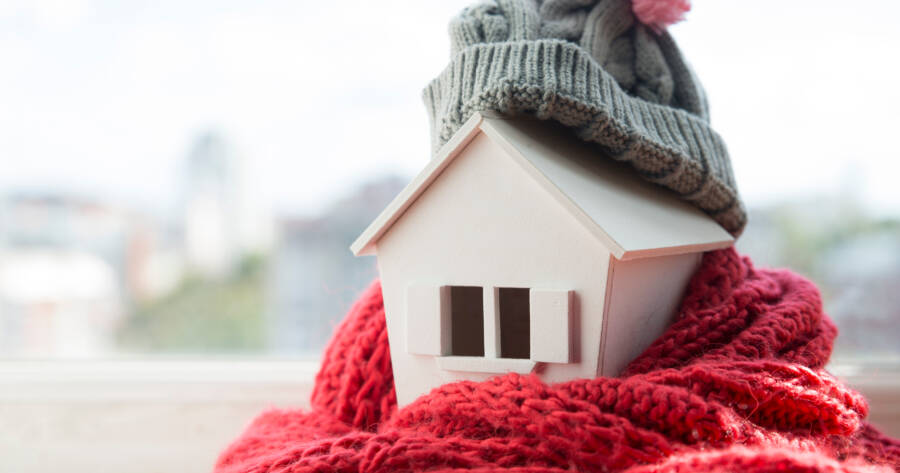As temperatures fall and heating systems work harder, utility bills often rise sharply during the winter months. Fortunately, thoughtful energy habits and a few strategic upgrades can make a meaningful difference in keeping costs under control. By focusing on insulation, efficient heating, and smarter household practices, homeowners can stay warm while reducing overall energy use. Simple adjustments paired with practical improvements can create a more comfortable living environment that remains budget-friendly throughout the colder season.
1. Seal Drafts and Insulate
A significant amount of household heat can escape through poorly sealed windows, doors, and uninsulated areas. Even small gaps can allow a surprising amount of cold air to enter, forcing your heating system to work harder. Checking for drafts is simple: move a lit candle or incense stick along window and door frames and watch for a flickering flame or smoke disturbance. Once leaks are identified, weatherstripping, caulking, and draft stoppers serve as inexpensive fixes that offer immediate benefits.
Beyond sealing gaps, upgrading insulation in attics, crawl spaces, and basements can provide long-term savings. Proper insulation slows the transfer of heat, reducing the need for constant furnace usage. Homeowners may also consider adding insulated outlet covers, door sweeps, and thicker window treatments. In colder climates, thermal curtains and multi-layer window kits help retain warmth more effectively and improve overall comfort.
2. Use a Programmable Thermostat
Heating your home only when needed is one of the easiest ways to manage winter utility costs. Programmable thermostats allow you to schedule temperature adjustments throughout the day, ensuring your home stays warm during active hours and uses less energy when you are sleeping or away. Reducing your thermostat by 7–10 degrees for eight hours a day can lower heating costs significantly over the season.
Smart thermostats add even greater control by adapting to your routines, learning your preferred temperatures, and optimizing energy use based on local weather patterns. Many models also offer remote control through mobile apps, making it simple to adjust temperatures from anywhere.
3. Upgrade to Energy-Efficient Appliances
Older appliances often use more energy than modern, efficient models. Switching to Energy Star-certified appliances helps reduce long-term energy consumption without sacrificing performance. While upgrading may require an upfront investment, the savings accumulate year after year through reduced utility bills. Furnaces, water heaters, refrigerators, and washing machines are among the appliances that benefit most from efficiency improvements.
Even without replacing appliances, adopting smarter usage habits makes a difference. Running dishwashers and washing machines during off-peak hours can be cheaper in certain areas, and using cold-water cycles reduces energy use immediately. Unplugging unused electronics and adding smart power strips to entertainment centers also help minimize “phantom energy” loss.
4. Take Advantage of Natural Heat
Sunlight is an underrated resource for winter heating. Opening blinds or curtains during daylight hours allows natural warmth to enter, especially through south-facing windows. Clearing obstructions such as outdoor shrubs or heavy drapes can increase sunlight exposure. At night, closing curtains helps trap heat indoors and reduces drafts.
For households seeking additional warmth, positioning sitting areas or workspaces near sunny windows can offer practical comfort without raising the thermostat.
5. Switch to LED Lighting
Lighting accounts for a noticeable share of household electricity use during winter due to longer nights. LED bulbs are significantly more efficient than traditional incandescent options, using up to 75% less energy and lasting years longer. Switching bulbs throughout your home is a quick, low-cost upgrade that immediately reduces electricity use.
To build on those savings, consider using timers or motion sensors in less-frequented rooms. Dimmers can also help manage energy use and extend bulb life.
6. Reduce Hot Water Usage
Water heating is often the second-largest energy expense in winter. Lowering your water heater temperature to 120°F helps save energy without affecting comfort. Adding a water heater blanket or insulating exposed pipes can further reduce heat loss and improve efficiency.
Practices such as shorter showers, using energy-saving showerheads, and washing laundry in cold water all contribute to meaningful energy reductions. If your budget allows, upgrading to a high-efficiency water heater or a heat-pump water heater can deliver substantial long-term savings.
7. Schedule Regular Maintenance
A well-maintained heating system operates more efficiently and lasts longer. Professional inspections identify issues like clogged filters, mechanical wear, and airflow blockages. Replacing furnace filters every one to three months boosts efficiency and helps maintain indoor air quality. Homeowners should also inspect vents, radiators, and ductwork for dust buildup or leaks, ensuring warm air circulates properly.
If you use a fireplace or wood-burning stove, yearly chimney cleanings improve safety and performance. Preventative maintenance reduces the risk of mid-winter breakdowns and can extend the life of expensive heating equipment.
Save Money, Stay Warm
By incorporating these small changes into your home, you can lower your energy bills and stay cozy all winter. From sealing drafts to upgrading appliances, these energy-efficient tips will make a noticeable difference in your utility costs without requiring major renovations.








